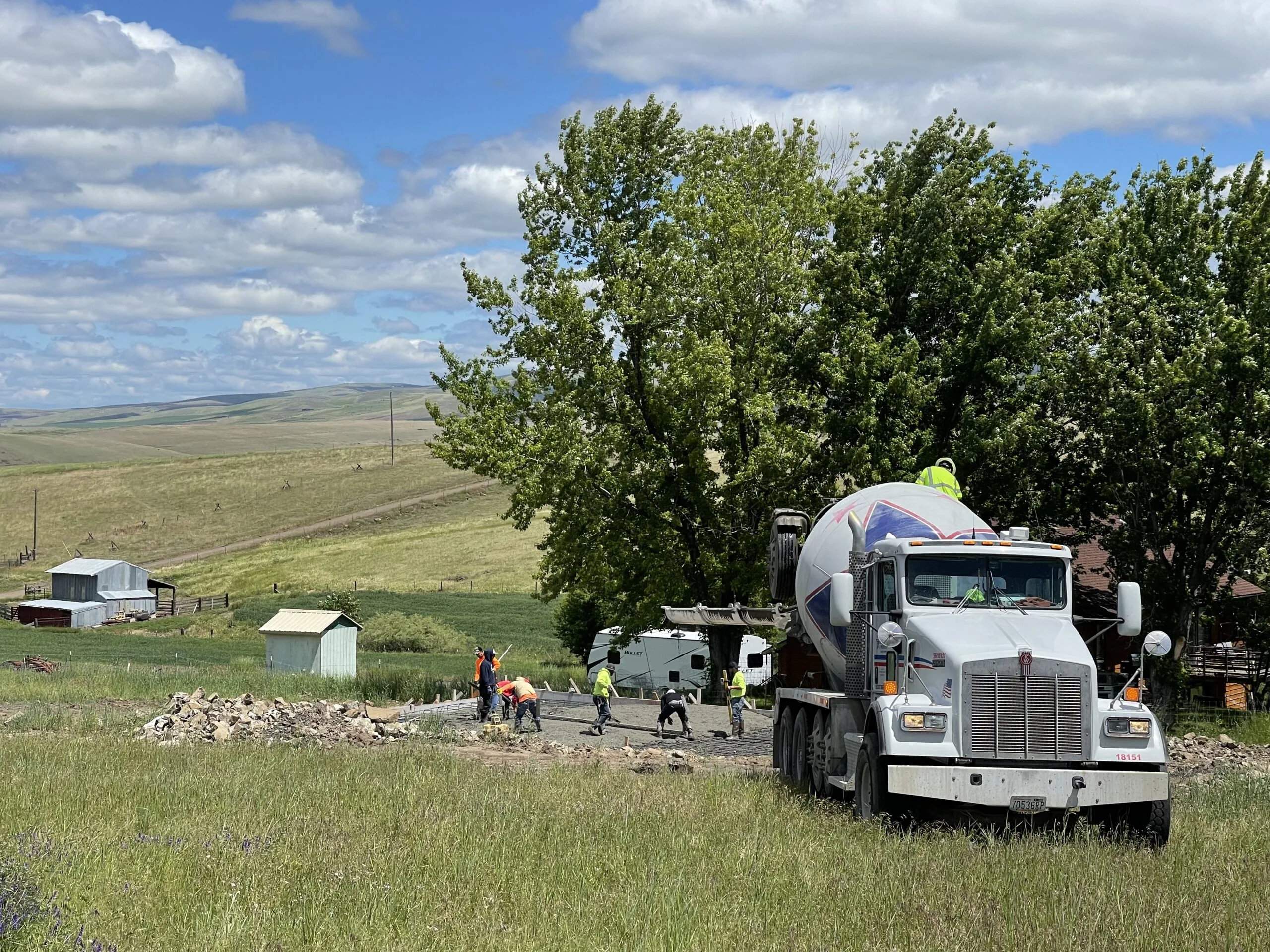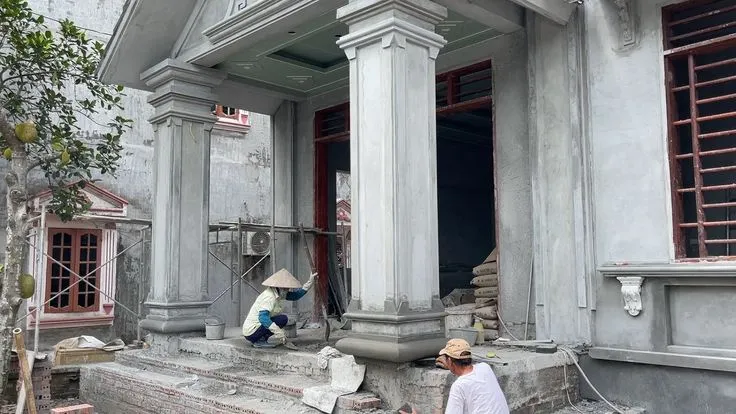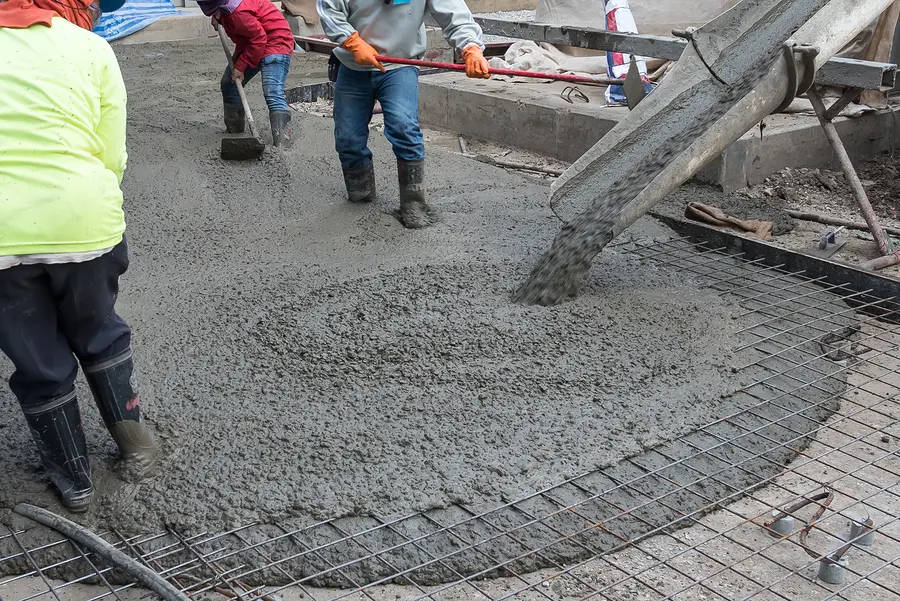Why concrete durability is essential?
Concrete Durability
Concrete durability refers to the ability of concrete constructions to endure a variety of external influences and climatic conditions over time. Weathering, chemical exposure, and structural loads can impact concrete durability.
Several factors influence the durability of concrete, including:
Quality of materials: Using high-quality cement, aggregates, and admixtures contributes to the durability of concrete.
Mix design: Proper proportioning of ingredients and appropriate water-cement ratio are crucial for achieving durable concrete.
Construction practices: Proper curing, compaction, and placement techniques are essential for maximizing concrete durability.
Environmental exposure: Exposure to harsh weather conditions, chemicals, and environmental pollutants can affect the longevity of concrete structures.
The Benefits of Low Maintenance Requirements for Concrete Structures
Because of their well-known longevity and minimal maintenance needs, concrete buildings are an excellent option for various construction tasks. This section will explore the advantages of low maintenance requirements in concrete structures and highlight their significance.
Advantages of Low-Maintenance Concrete
Low-maintenance concrete offers several benefits, including:
Cost-effectiveness: Reduced maintenance reduces long-term costs for building owners and stakeholders.
Time-saving: With minimal maintenance, concrete structures require less time and effort for upkeep, allowing for greater productivity.
Sustainability: Low-maintenance concrete contributes to sustainable construction practices by minimizing resource consumption and waste generation associated with maintenance activities.
Longevity: Concrete structures that require little upkeep are built to last, offering enduring value and performance.
Factors Contributing to Low Maintenance
Several factors contribute to the low maintenance requirements of concrete structures, such as:
Durability: Concrete's inherent strength and resistance to environmental factors minimize the need for repairs and replacements.
Protective coatings: Protective coatings or sealants further enhance concrete surfaces' durability and longevity.
Proper design and construction: Sound engineering practices, including appropriate curing and reinforcement, ensure the longevity of concrete structures with minimal maintenance needs.

Low maintenance requirements are a crucial advantage of concrete structures, which offer cost-effective, sustainable, and long-lasting solutions for construction projects. By prioritizing low-maintenance design principles and materials, stakeholders can optimize the performance and longevity of concrete structures while minimizing lifecycle costs.
Energy Efficiency of Concrete
Concrete structures offer durability and low maintenance and contribute to energy efficiency, making them eco-friendly for construction projects. In this section, we'll explore the energy-saving benefits of concrete in an easy-to-understand manner.
Energy efficiency in concrete refers to the ability of concrete structures to minimize energy consumption during their lifecycle. This includes energy-efficient production processes and concrete's thermal properties, which help regulate indoor temperatures and reduce the need for heating and cooling.
Advantages of Energy-Efficient Concrete
Energy-efficient concrete offers several benefits, including:
Concrete's thermal mass helps stabilize indoor temperatures, lowering heating and cooling costs. Concrete structures provide better insulation, maintaining consistent temperatures and improving occupant comfort.
Long-term savings: Lower energy bills translate to cost savings for building owners and occupants over the structure's lifespan.
Exploring the Versatility of Concrete in Design
Concrete is known for its strength, durability, and versatility in design, offering endless possibilities for architects, designers, and builders. In this section, we'll uncover the diverse range of design options available with concrete, presented in a simple and accessible manner.
Concrete's versatility as a building material enables a broad range of shapes, textures, and finishes to fit different architectural styles and project requirements, referred to in concrete design.
Concrete's versatility in design offers numerous advantages, including:
Architectural freedom: Concrete can be molded into virtually any shape or form, enabling architects to unleash their creativity and design innovative structures.
Aesthetic appeal: Concrete, with various finishes, colors, and textures available, offers endless possibilities for creating visually stunning and unique designs.
Functional adaptability: Concrete is helpful for various applications because it can be customized to fulfill specific performance requirements, such as strength, durability, and acoustic qualities.
Sustainable solutions: Concrete's durability and recyclability make it eco-friendly for sustainable design and construction projects.
Design Options with Concrete
Concrete offers a plethora of design options, including:
Architectural concrete: Exposed aggregate, stamped patterns, and textured finishes add visual interest and character to concrete surfaces.
Decorative elements: Concrete can create decorative features such as countertops, sinks, and furniture, enhancing interior and exterior spaces.
Structural innovation: From thin-shell structures to precast elements, concrete allows for innovative design solutions that push the boundaries of traditional construction methods.
Exploring the Cost-Saving Benefits of Reduced Labor in Concrete Construction
Reduced labor costs are a significant advantage of using concrete in construction projects, offering financial savings and increased efficiency. In this section, we'll delve into the reasons behind reduced labor costs when working with concrete, presented in an easy-to-understand manner.
Factors Contributing to Reduced Labor Costs
Several factors contribute to reduced labor costs in concrete construction, such as:
Modular construction techniques: Precast concrete elements and modular systems minimize on-site labor requirements, accelerating construction timelines and reducing labor expenses.
Mechanization and automation: Advancements in construction technology, such as concrete pumps and automated formwork systems, optimize labor efficiency and reduce manual labor needs.
Skilled labor availability: Concrete construction relies on a diverse workforce with varying skill levels, allowing for cost-effective labor solutions tailored to project requirements.
Reduced labor costs are a compelling reason to choose concrete for construction projects. Concrete offers financial savings, increased productivity, and simplified project management. By leveraging the efficiency of concrete construction methods and technologies, builders can maximize cost-effectiveness and deliver successful projects with minimal labor expenses.
Understanding Concrete's Resilience to Environmental Factors
Concrete's resilience to environmental factors is a crucial advantage, making it a preferred choice for worldwide construction projects. In this section, we'll explore how concrete withstands various ecological challenges, presented in an easy-to-understand manner.
Resilience to environmental factors refers to concrete's ability to withstand and endure harsh conditions such as extreme weather, temperature fluctuations, moisture, and chemical exposure without compromising its structural integrity or performance.
Factors Contributing to Concrete's Resilience
Several factors contribute to concrete's resilience to environmental factors, such as:
Quality materials: Using high-quality cement, aggregates, and admixtures ensures the durability and performance of concrete in challenging environments.
Proper design and construction practices: Sound engineering practices, including adequate reinforcement, proper curing, and waterproofing measures, enhance concrete's resilience to environmental stressors.
Protective coatings: Applying sealants or surface treatments further enhances concrete's resistance to moisture, chemicals, and abrasion, prolonging its lifespan and performance.
Concrete's resilience to environmental factors is a defining characteristic that makes it a reliable and durable building material. By understanding and leveraging concrete's inherent resilience, builders can construct structures that stand the test of time and withstand the rigors of the environment, ensuring sustainability and longevity for generations to come.
Embracing Sustainability: The Environmental Benefits of Concrete
Concrete is not just durable; it's also an environmentally sustainable building material with numerous benefits for our planet. In this section, we'll explore how concrete contributes to sustainability, presented in an easy-to-understand manner.
Factors Contributing to Concrete Sustainability
Concrete's sustainability is influenced by various factors, such as:
Sustainable sourcing: Using locally sourced materials and incorporating recycled aggregates and supplementary cementitious materials reduces environmental impacts associated with transportation and extraction.
Efficient production processes: Implementing energy-efficient manufacturing techniques and optimizing resource use during concrete production further enhances its sustainability credentials.
Lifecycle considerations: Considering the environmental impacts of concrete throughout its lifecycle, from raw material extraction to disposal, helps identify opportunities for improvement and sustainable practices.
From its low carbon footprint to its recyclability and long-term durability. Builders may create long-lasting structures and contribute to a more sustainable built environment by using concrete in their projects.
Unlocking Long-Term Financial Gains with Concrete Construction
Concrete construction presents significant long-term financial benefits, offering builders and property owners a solid return on investment. This section will elucidate why choosing concrete leads to lasting financial advantages, presented in an easy-to-understand manner.
FAQs
Why Concrete Construction for Long-Term Financial Gains?
Concrete construction provides several enduring financial benefits, including:
Lifespan: Because of its remarkable lifespan and resilience, concrete structures require fewer expensive repairs and replacements.
Energy efficiency: Concrete's thermal mass helps regulate indoor temperatures, lowering heating and cooling costs and resulting in substantial long-term energy savings.
Low maintenance: Concrete requires minimal upkeep compared to other building materials, translating to reduced maintenance expenses and preserving the investment's value.
Resilience: Concrete's resilience to environmental factors such as weathering, moisture, and pests ensures that structures remain stable and intact for decades, avoiding the financial burden of premature deterioration.
Conclusion
In conclusion, concrete construction offers unparalleled long-term financial benefits, including cost savings, property value appreciation, and risk mitigation.
CALL US ANYTIME (754) 201-2329 Premier Concrete Contractor in Pompano Beach,
Buyers and property owners can secure a solid financial future and enjoy lasting investment returns by choosing concrete for construction projects.




